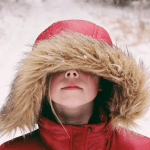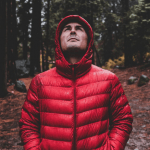

What to Look for in a Winter Parka
As the first autumn leaves start to dry out and flutter to the ground, it’s important to be prepared for the cold winter weather that will soon be upon us. Hats, gloves, boots, and other accessories should all be at the top of your to-do list, but it’s important not to forget about the humble parka. All other things considered, your parka covers the majority of your body, and it carries the bulk of the workload for keeping your body warm.
But how do you know if a parka is well-designed?
We’ll skip the style advice. There’s plenty of that going around the internet. Similarly, we’re not going to tell you to look for something comfortable. That’s obvious. Instead, we’re going to talk about what makes a winter parka warm, durable, and up to the task. Let’s get started!
Insulation is Key
 The first thing to look for in a winter parka is quality insulation. The insulation is the “stuffing” that fills out the inside of your jacket and keeps you warm. Good insulation does this by creating thousands of tiny air pockets, which trap warmth inside the shell of the jacket and create a barrier between your body and the outside world.
The first thing to look for in a winter parka is quality insulation. The insulation is the “stuffing” that fills out the inside of your jacket and keeps you warm. Good insulation does this by creating thousands of tiny air pockets, which trap warmth inside the shell of the jacket and create a barrier between your body and the outside world.
When you’re looking at insulation, you need to consider durability, washability, and weight. Here, we’ll look at the three most common insulation materials: down, synthetic, and pile fabric.
Down
Under ideal conditions, down insulation is the warmest available for the weight. It’s also very long-lasting and will stay effective for decades when properly maintained. That said, it’s not machine washable, so if you spill coffee on your down coat, you’ll need to take it to the dry cleaner’s.
The warmth of a down coat is measured in two numbers: fill power and fill weight. Fill power measures the “stiffness” of the down, or how hard it is to compress. A stiffer down will keep you warmer for longer and will have a higher fill power. The fill weight measures how much of the down is in the coat. Once again, a higher number means warmer insulation.
Synthetic
Synthetic insulation is made from finely-woven synthetic material, such as polyester, nylon, rayon, or acrylic. This material is intended to mimic the qualities of down as much as possible. Not too long ago, synthetic had a poor reputation for quality, but in recent years several major brands like PrimaLoft and Polarguard have put out quality products that are exceptionally reliable.
Like down insulation, synthetic doesn’t work well when exposed to water. However, most synthetic parkas can be machine washed and dried, which will restore them to order easily. That said, the synthetic fibers will compress over time and lose their “fluff”, so they’re not nearly as durable as a down coat.
Learn more about down vs synthetic jackets.
Pile Fabric
Pile fabric, sometimes called “fleece”, although different from the material used in your fleece jacket, is also manufactured to mimic the quality of sheep’s wool. It’s warm, it’s durable, and it’s machine-washable. That said, it’s only effective at limited thicknesses, so a fleece-insulated parka will not be as warm as other varieties.
Get a Waterproof Shell
 When you buy your winter parka, look for a tag that says the shell is waterproof. If you can’t find one, consider buying a different parka. This is important for two reasons.
When you buy your winter parka, look for a tag that says the shell is waterproof. If you can’t find one, consider buying a different parka. This is important for two reasons.
First, getting your insulation wet will reduce its effectiveness. This alone is a good reason to buy a parka with a waterproof shell. After all, a 35-degree day may not be all that cold, but it’s downright miserable when there’s water soaking through your winter outerwear.
Secondly, your insulation can get wet even from snow. Say you come inside and hang your jacket up, but it’s covered with snow, which melts and then soaks through the shell. Now let’s say you have two dogs, and you’re going in and out eight times a day. That can end up soaking your insulation even if you’ve never been out in the rain.
Long story short, you need a waterproof shell.
Look for Tight Cuffs
Tight cuffs might sound like an afterthought, but there are few things that will ruin a snowy day faster than a big wad of cold fluff up your sleeve. A tight, velcro cuff will keep that snow on the outside, where it belongs. In addition, many quality winter gloves have built-in gauntlets for covering your sleeves. These gauntlets work best when you’re wearing a sleeve that hugs tight to your wrist.
Quality Zippers
Finally, it’s important to look for a winter parka with a good zipper. Now, we’ve talked about the importance of a waterproof shell, but even the best zippers are going to let some amount of moisture through. Look for rugged YKK zippers, and buy a jacket with a reinforced zipper if you can. A generous water-resistant flap can make a lot of difference on a damp day.









